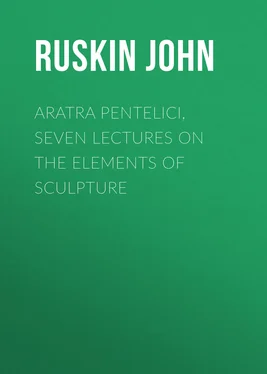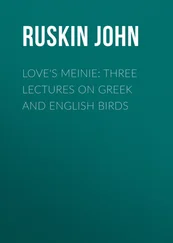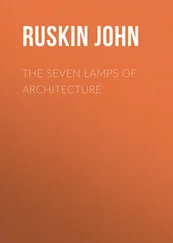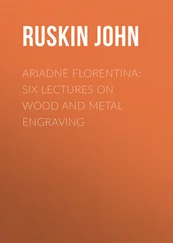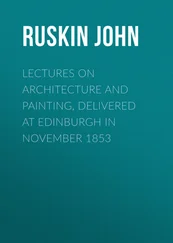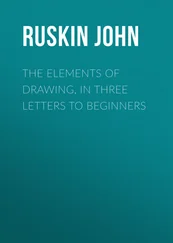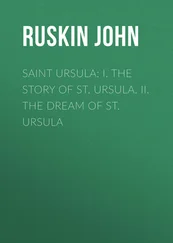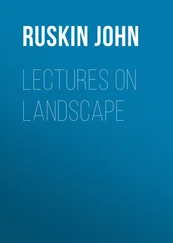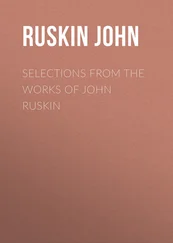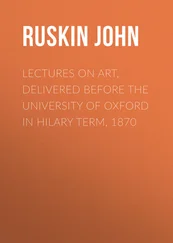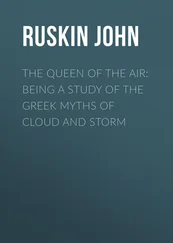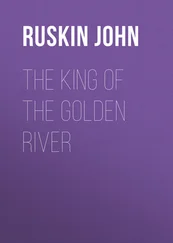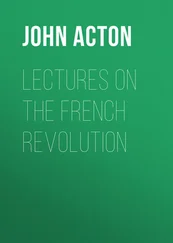John Ruskin - Aratra Pentelici, Seven Lectures on the Elements of Sculpture
Здесь есть возможность читать онлайн «John Ruskin - Aratra Pentelici, Seven Lectures on the Elements of Sculpture» — ознакомительный отрывок электронной книги совершенно бесплатно, а после прочтения отрывка купить полную версию. В некоторых случаях можно слушать аудио, скачать через торрент в формате fb2 и присутствует краткое содержание. Жанр: foreign_antique, foreign_home, literature_19, visual_arts, на английском языке. Описание произведения, (предисловие) а так же отзывы посетителей доступны на портале библиотеки ЛибКат.
- Название:Aratra Pentelici, Seven Lectures on the Elements of Sculpture
- Автор:
- Жанр:
- Год:неизвестен
- ISBN:нет данных
- Рейтинг книги:5 / 5. Голосов: 1
-
Избранное:Добавить в избранное
- Отзывы:
-
Ваша оценка:
- 100
- 1
- 2
- 3
- 4
- 5
Aratra Pentelici, Seven Lectures on the Elements of Sculpture: краткое содержание, описание и аннотация
Предлагаем к чтению аннотацию, описание, краткое содержание или предисловие (зависит от того, что написал сам автор книги «Aratra Pentelici, Seven Lectures on the Elements of Sculpture»). Если вы не нашли необходимую информацию о книге — напишите в комментариях, мы постараемся отыскать её.
Aratra Pentelici, Seven Lectures on the Elements of Sculpture — читать онлайн ознакомительный отрывок
Ниже представлен текст книги, разбитый по страницам. Система сохранения места последней прочитанной страницы, позволяет с удобством читать онлайн бесплатно книгу «Aratra Pentelici, Seven Lectures on the Elements of Sculpture», без необходимости каждый раз заново искать на чём Вы остановились. Поставьте закладку, и сможете в любой момент перейти на страницу, на которой закончили чтение.
Интервал:
Закладка:
53. You were perhaps surprised at my placing in your educational series, as a type of original Italian sculpture, the pulpit by Niccola Pisano in the Duomo of Siena. I would rather, had it been possible, have given the pulpit by Giovanni Pisano in the Duomo of Pisa; but that pulpit is dispersed in fragments through the upper galleries of the Duomo, and the cloister of the Campo Santo; and the casts of its fragments now put together at Kensington are too coarse to be of use to you. You may partly judge, however, of the method of their execution by the eagle's head, which I have sketched from the marble in the Campo Santo (Edu., No. 113), and the lioness with her cubs (Edu., No. 103, more carefully studied at Siena); and I will get you other illustrations in due time. Meanwhile, I want you to compare the main purpose of the Cathedral of Pisa, and its associated Bell Tower, Baptistery, and Holy Field, with the main purpose of the principal building lately raised for the people of London. In these days, we indeed desire no cathedrals; but we have constructed an enormous and costly edifice, which, in claiming educational influence over the whole London populace, and middle class, is verily the Metropolitan cathedral of this century,—the Crystal Palace.
54. It was proclaimed, at its erection, an example of a newly discovered style of architecture, greater than any hitherto known,—our best popular writers, in their enthusiasm, describing it as an edifice of Fairyland. You are nevertheless to observe that this novel production of fairy enchantment is destitute of every kind of sculpture, except the bosses produced by the heads of nails and rivets; while the Duomo of Pisa, in the wreathen work of its doors, in the foliage of its capitals, inlaid color designs of its façade, embossed panels of its Baptistery font, and figure sculpture of its two pulpits, contained the germ of a school of sculpture which was to maintain, through a subsequent period of four hundred years, the greatest power yet reached by the arts of the world, in description of Form, and expression of Thought.
55. Now it is easy to show you the essential cause of the vast discrepancy in the character of these two buildings.
In the vault of the apse of the Duomo of Pisa was a colossal image of Christ, in colored mosaic, bearing to the temple, as nearly as possible, the relation which the statue of Athena bore to the Parthenon; and in the same manner, concentrating the imagination of the Pisan on the attributes of the God in whom he believed.
In precisely the same position with respect to the nave of the building, but of larger size, as proportioned to the three or four times greater scale of the whole, a colossal piece of sculpture was placed by English designers, at the extremity of the Crystal Palace, in preparation for their solemnities in honor of the birthday of Christ, in December 1867 or 1868.
That piece of sculpture was the face of the clown in a pantomime, some twelve feet high from brow to chin, which face, being moved by the mechanism which is our pride, every half-minute opened its mouth from ear to ear, showed its teeth, and revolved its eyes, the force of these periodical seasons of expression being increased and explained by the illuminated inscription underneath, "Here we are again."
56. When it is assumed, and with too good reason, that the mind of the English populace is to be addressed, in the principal Sacred Festival of its year, by sculpture such as this, I need scarcely point out to you that the hope is absolutely futile of advancing their intelligence by collecting within this building (itself devoid absolutely of every kind of art, and so vilely constructed that those who traverse it are continually in danger of falling over the cross-bars that bind it together,) examples of sculpture filched indiscriminately from the past work, bad and good, of Turks, Greeks, Romans, Moors, and Christians, miscolored, misplaced, and misinterpreted; 15 15 "Falsely represented," would be the better expression. In the cast of the tomb of Queen Eleanor, for a single instance, the Gothic foliage, of which one essential virtue is its change over every shield, is represented by a repetition of casts from one mold, of which the design itself is entirely conjectural.
here thrust into unseemly corners, and there mortised together into mere confusion of heterogeneous obstacle; pronouncing itself hourly more intolerable in weariness, until any kind of relief is sought from it in steam wheelbarrows or cheap toyshops; and most of all in beer and meat, the corks and the bones being dropped through the chinks in the damp deal flooring of the English Fairy Palace.
57. But you will probably think me unjust in assuming that a building prepared only for the amusement of the people can typically represent the architecture or sculpture of modern England. You may urge that I ought rather to describe the qualities of the refined sculpture which is executed in large quantities for private persons belonging to the upper classes, and for sepulchral and memorial purposes. But I could not now criticise that sculpture with any power of conviction to you, because I have not yet stated to you the principles of good sculpture in general. I will, however, in some points, tell you the facts by anticipation.
58. We have much excellent portrait sculpture; but portrait sculpture, which is nothing more, is always third-rate work, even when produced by men of genius;—nor does it in the least require men of genius to produce it. To paint a portrait, indeed, implies the very highest gifts of painting; but any man, of ordinary patience and artistic feeling, can carve a satisfactory bust.
59. Of our powers in historical sculpture, I am, without question, just, in taking for sufficient evidence the monuments we have erected to our two greatest heroes by sea and land; namely, the Nelson Column, and the statue of the Duke of Wellington opposite Apsley House. Nor will you, I hope, think me severe,—certainly, whatever you may think me, I am using only the most temperate language, in saying of both these monuments, that they are absolutely devoid of high sculptural merit. But consider how much is involved in the fact thus dispassionately stated, respecting the two monuments in the principal places of our capital, to our two greatest heroes.
60. Remember that we have before our eyes, as subjects of perpetual study and thought, the art of all the world for three thousand years past; especially, we have the best sculpture of Greece, for example of bodily perfection; the best of Rome, for example of character in portraiture; the best of Florence, for example of romantic passion; we have unlimited access to books and other sources of instruction; we have the most perfect scientific illustrations of anatomy, both human and comparative; and we have bribes for the reward of success, large in the proportion of at least twenty to one, as compared with those offered to the artists of any other period. And with all these advantages, and the stimulus also of fame carried instantly by the press to the remotest corners of Europe, the best efforts we can make, on the grandest of occasions, result in work which it is impossible in any one particular to praise.
Now consider for yourselves what an intensity of the negation of the faculty of sculpture this implies in the national mind! What measure can be assigned to the gulf of incapacity, which can deliberately swallow up in the gorge of it the teaching and example of three thousand years, and produce, as the result of that instruction, what it is courteous to call 'nothing'?
61. That is the conclusion at which we arrive on the evidence presented by our historical sculpture. To complete the measure of ourselves, we must endeavor to estimate the rank of the two opposite schools of sculpture employed by us in the nominal service of religion, and in the actual service of vice.
Читать дальшеИнтервал:
Закладка:
Похожие книги на «Aratra Pentelici, Seven Lectures on the Elements of Sculpture»
Представляем Вашему вниманию похожие книги на «Aratra Pentelici, Seven Lectures on the Elements of Sculpture» списком для выбора. Мы отобрали схожую по названию и смыслу литературу в надежде предоставить читателям больше вариантов отыскать новые, интересные, ещё непрочитанные произведения.
Обсуждение, отзывы о книге «Aratra Pentelici, Seven Lectures on the Elements of Sculpture» и просто собственные мнения читателей. Оставьте ваши комментарии, напишите, что Вы думаете о произведении, его смысле или главных героях. Укажите что конкретно понравилось, а что нет, и почему Вы так считаете.
